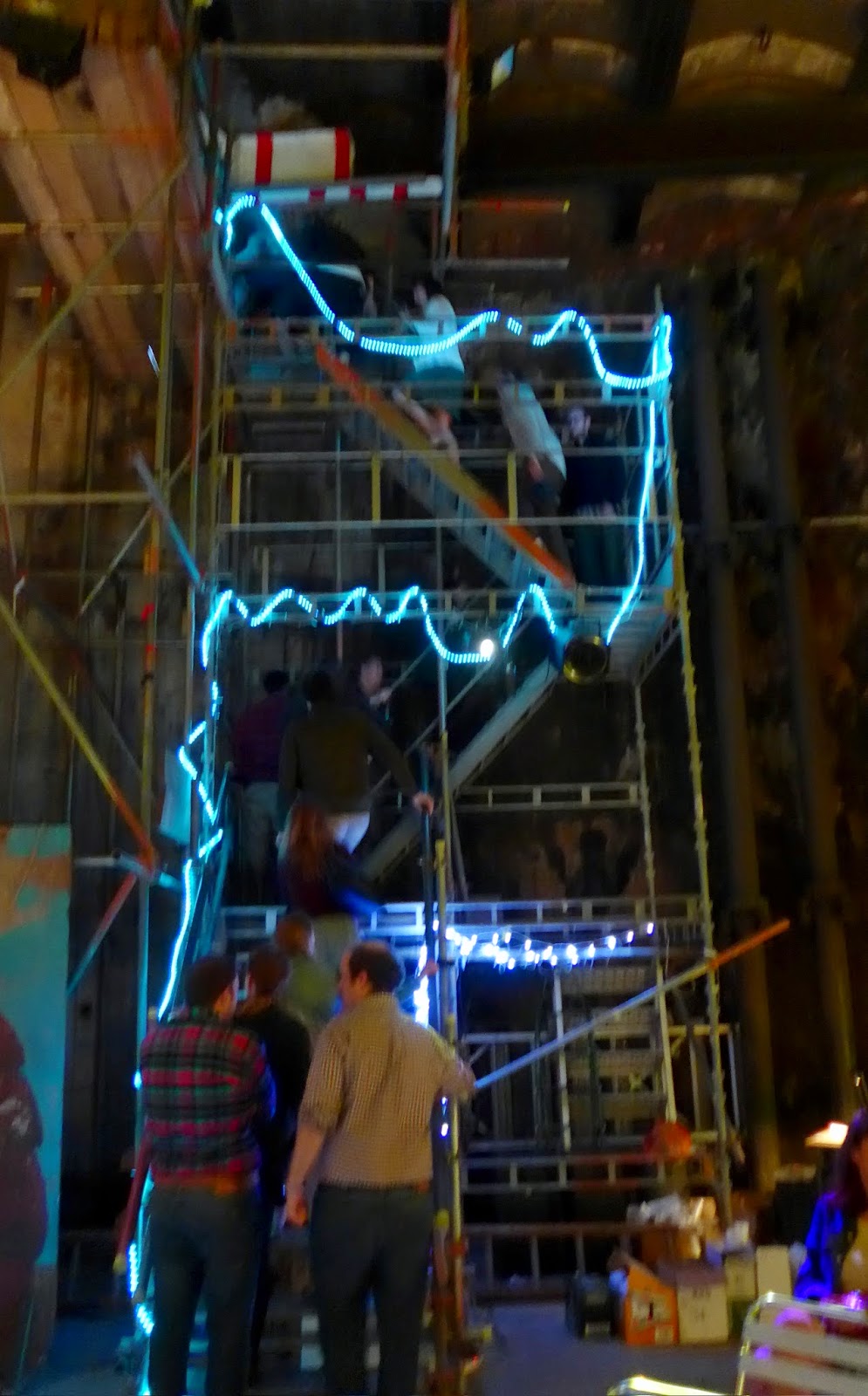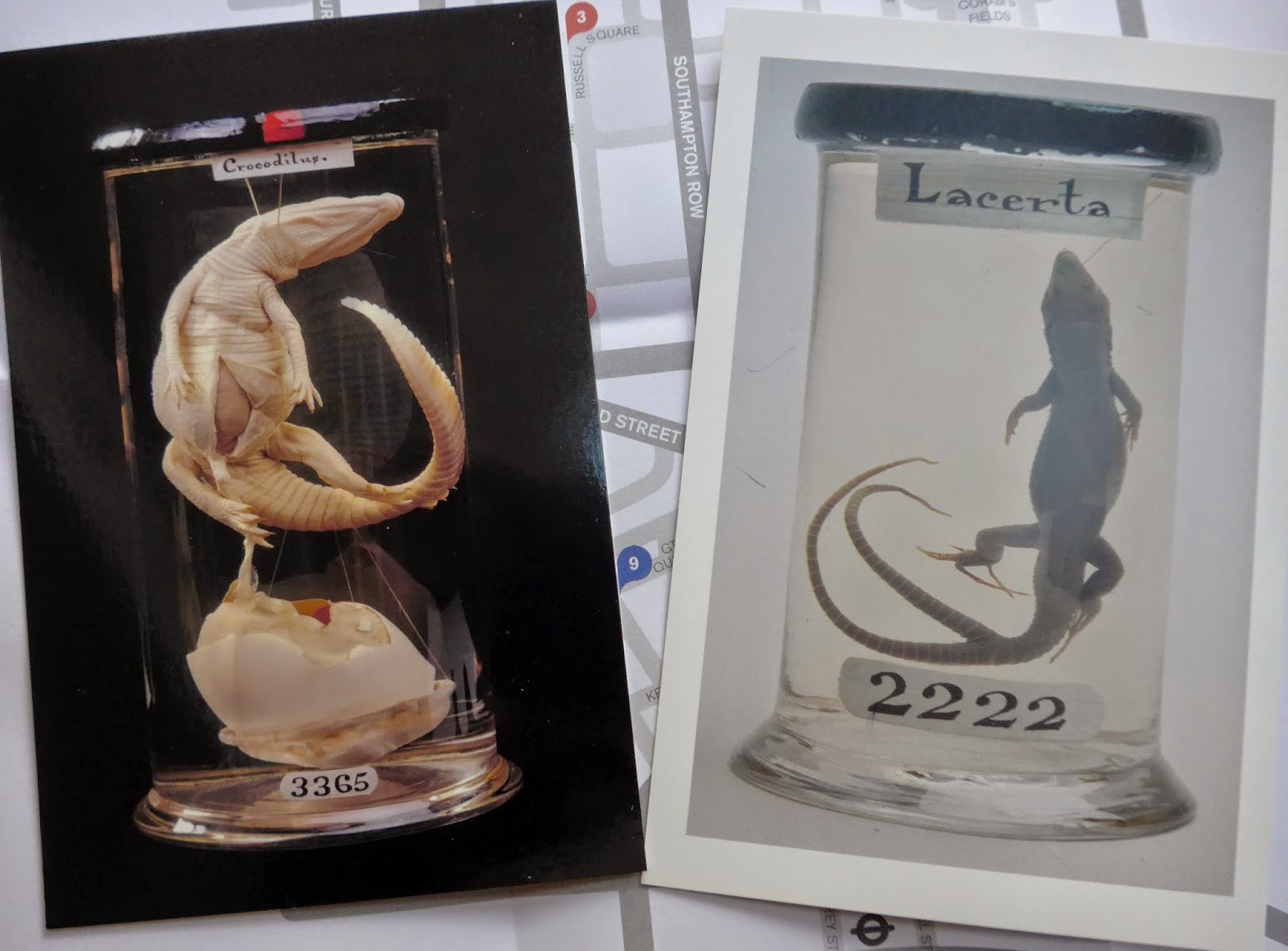"Who am I?"
I'm a mum, I like going to exhibitions, I love museums and galleries, I watch TV,
I like going out, occasionally I draw and make things, I like Grayson Perry.
My fifteen year old had watched the programmes with me.
At eleven the other two had gone to bed by the time it was on,
so they weren't keen but I had promised them hot chocolate and that we would also see
the Christmas Tree in Trafalgar Square next door.
For this exhibition, there's a route, a journey around the first floor.
Grayson Perry talks about identity in terms of a journey,
"I have attempted to portray the character of the identity journey
they (the subjects) are facing."
You begin at Grayson Perry's self portrait, 'Map of Days'.
A self-portrait as a fortified town with walls that he suggests are his skin.
I notice that the walls are thick, heavy lines.
Very near the Map of Days was a Families Activity Base
where my younger two were given sketchbooks and a pencil each. They were happy.
From 'A Map of Days' you head to Grayson Perry's 'Comfort Blanket'.
All things British.
Grayson Perry gives you something to "wrap yourself up in".
Things "we love, and love to hate".
I'm British, is this me?
I've never been to Number 10, Offa's Dyke or Glastonbury.
I do love a 'cuppa' though.
I queue with the best of them.
I've never met the Queen.
So who are these people in this exhibition?
'Melanie, Georgina and Sarah'
"Three women, big and proud, who want their size to be seen as positive."
Their dresses are decorated with images of food and women.
Food and self-image are so intertwined, I get that.
I don't want my daughters to get that though, they will soon enough.
Food can be glorious and so can women's bodies.
'Modern Family'.
Male parents with a mixed-race daughter.
Grayson Perry tells us that they teach us an important lesson,
that parenting is hard work, needs thought, is not something you can take for granted.
You don't often notice good parenting, it just happens.
But there are times when you high five yourself,
little moments when you could burst with love and pride for your kids.
This family appears to be revered on a pot, canonised, enthroned in the clouds.
Hurrah for Grayson Perry, celebrating good parenting.
Kids are part of the next story too.
Four kids, I know what that involves.
'The Ashford Hijab'.
Mum, Kayleigh is a convert to Islam,
and on this hijab, Grayson Perry shows a journey from the temple of consumerism,
to Mecca across a busy road.
Watching this couple in the TV series was very moving.
'Memory Jar'.
Alzheimer's disease, robbing this couple of memory and identity.
Memories, family photos, are being snipped away.
The thought of either myself or my husband losing memories of our life together
is something I find hard to deal with.
In our family, an older generation, some memories are slipping away, it's disconcerting.
Though I've never thought of it as an act of vandalism, ravaging with scissors,
but more of a river gradually and slowly washing away the bank.
I have to mention 'The Huhne Vase'.
Chris Huhne found fame (infamy) perverting the cause of justice,
all over a speeding offence.
Surely I can't relate to this?
I loved what Grayson Perry had to say about this story.
"I have smashed the pot and had it repaired with gold
to symbolise that vulnerability might be an asset..."
I'm not that broken, but we all know what it is to have cracks.
But imagine being repaired, put back together with gold?
Vulnerability, gleaming and attractive, something beautiful.
As a friend said about this work,
"Grayson Perry has been very kind."
I'm not sure, having watched the programme, that Chris Huhne really got that.
As for my kids identity, for now anyway.
Not on a pot, a blanket or a hijab, those sketchbooks were very revealing.
My son, asked a new question.
"What is your story?"
He's not interested in identity, he wants genres, characters, main events.
My daughter made a list.
A visual list, collecting little bits of Grayson Perry's work.
The Queen's eye, a horse's head and The Earl of Essex.
Above are just a few of the people Grayson Perry asked, "Who are you?"
To see more, see the exhibition for yourself at the National Portrait Gallery
on until 15th march 2015.
The question remains: Who are you?
Staying with the National Portrait Gallery, I have to show this lady,
she has helped formed my identity,
as a woman,
as a voter.
Emmeline Pankhurst 1858-1928.




































.JPG)



























